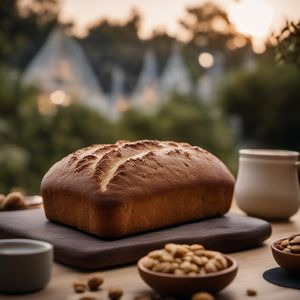
Dish
Bulkie Roll
Bulkie roll is made from flour, yeast, salt, sugar, and water. The dough is shaped into small rolls and baked until golden brown. The bread has a firm texture and a slightly sweet flavor. Bulkie roll is commonly used for making sandwiches, such as lobster rolls and roast beef sandwiches. It can also be served with butter or jam for breakfast or as a side dish for soups and stews.
Origins and history
Bulkie roll originated in New England and is a staple in New England cuisine. It is believed to have been introduced by English settlers who immigrated to the region in the 17th century. The bread is similar to other New England breads, such as Anadama bread and Boston brown bread, but has a firmer texture and a more pronounced crust.
Dietary considerations
Bulkie roll is not suitable for people with gluten intolerance or celiac disease.
Variations
There are many variations of bulkie roll, including bulkie roll with sesame seeds, which are topped with sesame seeds before baking. Some variations also include herbs and spices in the dough.
Presentation and garnishing
Bulkie roll is traditionally served whole, but can also be sliced and toasted for added texture. It is often garnished with fresh herbs or sliced vegetables.
Tips & Tricks
To keep bulkie roll fresh, store it in a paper bag at room temperature for up to two days. To reheat, wrap it in foil and place it in a preheated oven for 10-15 minutes.
Side-dishes
Bulkie roll is commonly served with sandwiches, such as lobster rolls and roast beef sandwiches. It can also be used for making burgers and hot dogs.
Drink pairings
Bulkie roll pairs well with New England beers, such as Sam Adams and Harpoon. It can also be served with cider or iced tea.
Delicious Bulkie Roll recipes
More dishes from this category... Browse all »

Acorn Bread
Native American cuisine

Alkubus
Moroccan cuisine

Almojábana
Colombian cuisine

Anadama Bread
American cuisine

Antiguan Butter Bread
Antiguan cuisine

Baati
Indian cuisine

Babà rustico
Italian cuisine

Baguette
French cuisine
More cuisines from this region...

Fusion cuisine
Bold, Unexpected, Innovative, Creative

Midwestern American cuisine
Savory, Hearty, Comforting, Rich, Creamy

Northeastern American cuisines
Salty, Sweet, Savory, Tangy, Creamy

Southern American cuisine
Savory, Spicy, Sweet, Tangy, Smoky

Southwestern American cuisine
Spicy, Bold, Smoky, Earthy, Tangy

Western American cuisine
Hearty, Flavorful, Savory, Spicy, Smoky

